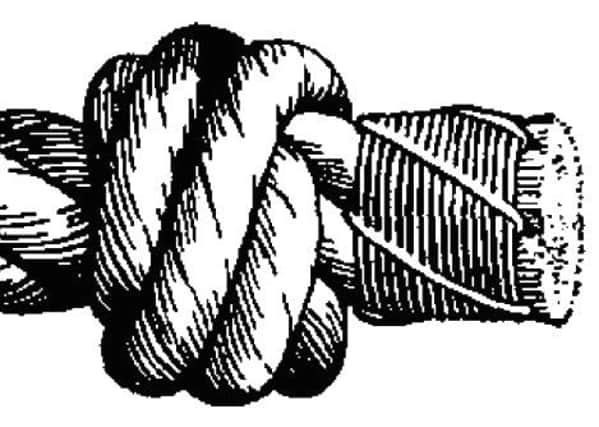Did this unique knot have a connection to Wearside?


Although often illiterate, old-time mariners could demonstrate a remarkable array of skills in working with rope.
Many complicated and intricate knots were conceived, with some jealously guarding the secrets of their inventions.
Advertisement
Hide AdAdvertisement
Hide AdSome of these knots have now become relatively obscure, one being the Matthew Walker knot, which is said to have originated on Wearside.
This knot is primarily a stopper knot used to form a knob in a rope’s end, but also used as a lanyard knot and for decorative purposes.
It is tied by unravelling the strands of a rope, which are then knotted together and layed (sic) up once more.
The National Maritime Museum at Greenwich says some 25 variations are now in existence.
Advertisement
Hide AdAdvertisement
Hide AdThe first printed reference to Matthew Walker knot is contained in the 1808 publication The Sheet Anchor by D’arcy Lever – the first comprehensive guide to marlinspike seamanship, which became to be regarded as the seaman’s bible.
But, who was Matthew Walker?
Historical accounts reveal him to have been a mid-18th-century rigger who lived with his wife on board an old covered-in hulk moored at Monkwearmouth Shore’s Folly End quayside.
Apparently a prosperous man, he made his living by employing a gang of men to rig lines to support the masts, sails and chains of wooden sailing ships.
With the growth of the Wear’s shipbuilding industry, Walker and his team would have been very busy rigging not only new ships, but repairing and replacing ropes on board those already in service.
Advertisement
Hide AdAdvertisement
Hide AdAnother intriguing theory concerning the knot’s origin may well be a myth, but on the other hand may contain grains of truth.
Evidently, a sailor named Matthew Walker (was this the same man who lived at Folly End?) was sentenced to death for some reason.
The judge, being a former seafarer himself, sought to reprieve the man provided that he could devise a knot which his lordship could neither tie nor untie.
Sent back to his cell with 10 fathoms (60ft) of rope, Walker eventually succeeding in meeting the challenge and received a pardon by producing the first knot which later bore his name.
Advertisement
Hide AdAdvertisement
Hide AdToday, although some of the traditional ropeworking expertise has been lost, there are many modern-day mariners whose training helps keep such skills alive.
Although the Matthew Walker is not in common use and regarded as being difficult to accomplish, I wonder if any of our local boatmen (such as “John the Rope”) are up to the challenge!